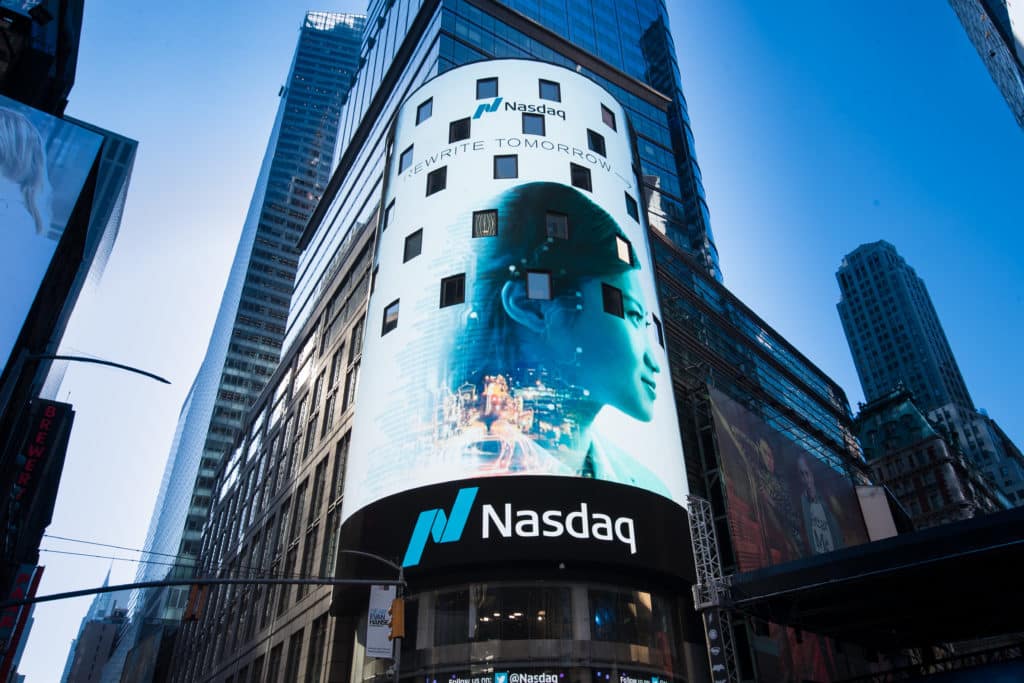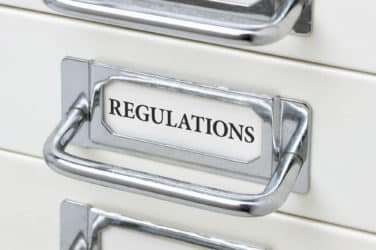

Nasdaq Europe will go live with a new equity derivatives platform in the first quarter of this year after achieving records in its listings and trading businesses across the Nordic and Baltic regions in 2021.
Bjørn Sibbern, president of European markets at Nasdaq, told Markets Media: “We want to be the leading exchange in Europe for both listings, trading and technology. This year we will go live with a new equity derivatives platform in the first quarter.”
In November last year Nasdaq announced a multi-year partnership with AWS to migrate its North American markets to the cloud provider in a phased approach, starting with Nasdaq MRX, a US options market. Nasdaq will use a new edge computing solution that is co-designed with AWS specifically for market infrastructure.
“The AWS partnership will start with Nasdaq’s US markets which makes total sense from a customer and regulatory point of view,” added Sibbern. “We will obviously look at the European offerings in phase two.”
Nasdaq reported that volumes in most of its equity markets in Sweden, Denmark, Finland, Iceland and the Baltics grew in 2021. Share trading increased 7.1% to a daily average of just under €4bn ($4.5bn) across all markets.
Sibbern said: “We have had a vision for some years to be the best performing exchange in Europe and in 2021 we had a super strong market share in trading.”
He believes the increased interest in equity trading from the retail community is here to stay and that it is part of the exchange’s job to educate the many new retail investors together with the banks and brokers.
Nasdaq’s European markets had 219 new equity listings in 2021, including 174 initial public offerings, which raised a total of €13.4bn.
“We were the biggest EU exchange for both the number of listings and capital raised,” Sibbern added. “We are super happy with the mix between SMEs and listings such as Volvo Cars, one of the biggest in Europe last year.”
Volvo Cars raised €2.1bn in the third largest listing in Europe in 2021.
Last Friday was a momentous day in Volvo Cars’ history as we were officially listed on the stock exchange in Stockholm, Sweden. The ringing of the Nasdaq bell and the opening of our orderbook was celebrated by our teams around the world.#ForEveryonesSafety#volvocars #volvocarusa pic.twitter.com/0y50bSpI6L
— Volvo Cars North Miami (@VolvoNorthMiami) November 5, 2021
Nasdaq Europe wants to be the leading exchange in Europe for small and medium-sized enterprises. The Nasdaq First North Growth Market has more than 500 companies listed and more than 100 have moved from First North to the main market in Stockholm.
“The companies grow from Sweden into Europe, then into the world, or they grow from Finland into Europe and retail investors get the opportunity to invest and be a part of the growth journey,” Sibbern said. “Democratizing investments is a very important part of what we do”
He continued that the exchange is benefitting from the strong listing market and equity culture in the Nordics, especially in Sweden, which has been built over the last 10 years. For example, banks have spent a lot of time on education, tax incentives make it attractive to invest in equities, a network of advisors support companies onto the exchange and anchor investors are willing to put risk capital in some of the smaller companies.
“We have tried to copy that concept in Finland, which had a record 30 listings last year, and in Denmark,” added Sibbern.
After record listings in 2021 Nasdaq Europe has high expectations for 2022, although Sibbern noted that the significant volatility in January will have an impact on the listings momentum.
ESG opportunities
In addition to listings, Sibbern believes environmental, social and governance capabilities are a fantastic opportunity and one area where the Nordics have an edge.
In a discussion exploring the financial sector’s role to address climate change, @Nasdaq’s Bjorn Sibbern offered key insights during the #COP26 Conference:
? Standardizing Climate Data
? Managing Risk
? Changing Rules and ValuesLearn more: https://t.co/6wJgMwi2VD pic.twitter.com/1lP8cnczBr
— Nasdaq (@Nasdaq) February 13, 2022
The Nasdaq Sustainable Bond Network (NSBM)now covers more than 90% of global sustainable bonds and Nasdaq is close to 100% according to Sibbern. In 2019 the exchange launched the network which provides investors with a centralized point to find detailed information on sustainable bonds via framework documents and impact reports.
“The next phase is to help the bond issuers so they can compare their data versus industry peers,” added Sibbern.
He is also excited about Nasdaq’s majority investment in Puro.earth as the exchange wants to help support its companies to be carbon neutral. In June 2021 Nasdaq announced its acquisition of a majority stake in Puro.earth, a global marketplace for buying and selling carbon removals.
There has been a lot of discussion around carbon offsets but Sibbern said Nasdaq wanted to focus on removing carbon from the atmosphere as that will deliver more for customers. Companies using Puro.earth have built CO2 removal plants and companies can buy CO2 removal certificates (CORCS) to reduce their carbon footprint. Trade value in Puro.earth’s CORCs grew more than 360% year-on-year in 2021, although this was from modest volumes according to Nasdaq.
Nasdaq expects trading in CORCs to grow significantly and that in five years it will be a massive market due to demand from corporations. The biggest challenge is supply and to have the right techniques and plants that remove carbon from the atmosphere.
Last year’s #COP26 led to the introduction of Article 6.4, a global protocol for trading #carboncredits and #offsets. This effectively stopped the ‘double counting’ of carbon credits by countries and groups. ?
Read about how this changed #carbonmarkets:https://t.co/0IOI5JnlBr pic.twitter.com/VVHbu2SIYA
— Puro.earth (@PuroCO2Removal) February 8, 2022
“This is a global offering and we can support Nasdaq’s more than 4,000 listed companies on their journey of becoming carbon neutral,” added Sibbern. “Companies can also buy pre-CORCS that will be delivered in the future.”
Puro.earth’s marketplace will run on Nasdaq technology and the firm will also benefit from Nasdaq’s data and global distribution while Nasdaq can build indices around the marketplace.
CME Group said on its results call that it is creating a new environmental products portfolio.
Derek Sammann, global head of commodities, options and international markets described the carbon trading market as in an early stage of development.
“We are going to see this increasingly become a portion of every global company’s risk management toolkit,” Sammann added. “This will be a slow build and the energy transition could be decades long.”
On 8 February 2022 CME Group announced it will launch CBL Core Global Emissions Offset (C-GEO) futures on March 7 pending all relevant regulatory reviews. CBL C-GEO futures are intended to align with the Core Carbon Principles, an emerging set of transparent and consistent standards around the supply of carbon credits to be overseen by the Integrity Council for the Voluntary Carbon Markets.
In 2021 CME cleared more than 47 million carbon offsets through its voluntary emissions offset contracts – Global Emissions Offset (GEO) and Nature-Based Global Emissions Offset (NGO) futures. The exchange said GEO and NGO futures have established themselves as the pricing benchmarks for the international Voluntary Carbon Market.
Sammann said: “The carbon products that we launched last year have been a tremendous success in a cash market that did not exist two and a half years ago.”
Ben Jackson, president of ICE, said on the results call that ICE was early to diversify into environmental markets when it acquired the Climate Exchange in 2010.
“In 2021 we reached record volumes across the complex including in our EU, UK, renewable greenhouse gas initiatives and California carbon allowances,” he added.
Jackson continued that record volumes contributed to a 56% increase in environmental revenues from 2020 as customers navigated the uncertainty and volatility related to the clean energy transition.
ICE traded a total of 18 billion tons of carbon allowances in 2021, equivalent to an estimated $1 trillion in notional value and equal to over half the world’s estimated total annual energy-related emissions footprint.
In October 2021 ICE invested in LevelTen Energy, which brings greater transparency and liquidity to the renewable energy industry and enables participants to transact on power purchase agreements and physical energy assets more efficiently.
The London Stock Exchange Group said in November 2021 that it is developing a market solution to accelerate the availability of financing for projects that will support a just transition to a low carbon economy. The goal is to address access to capital at scale for the development of new climate projects worldwide; and primary market access to a long-term supply of high-quality carbon credits for corporates and investors.







